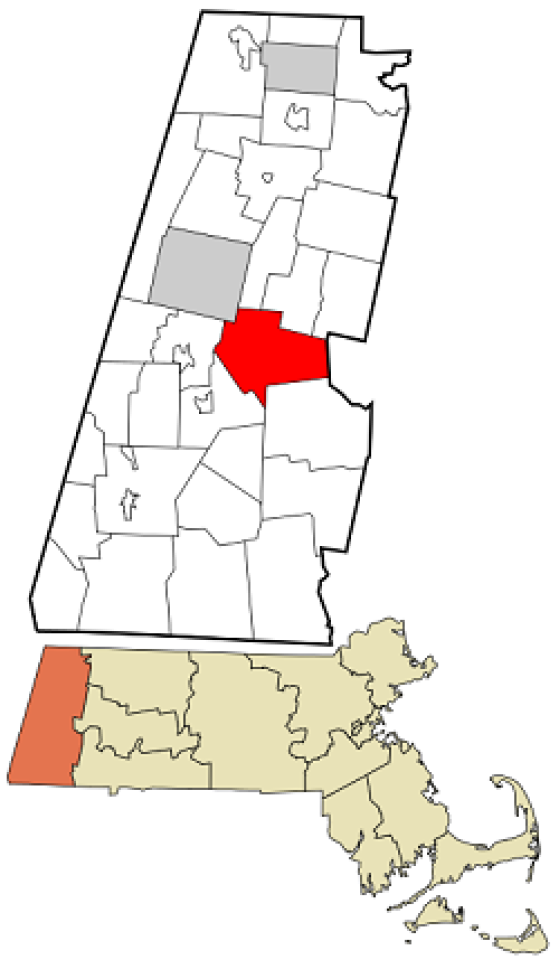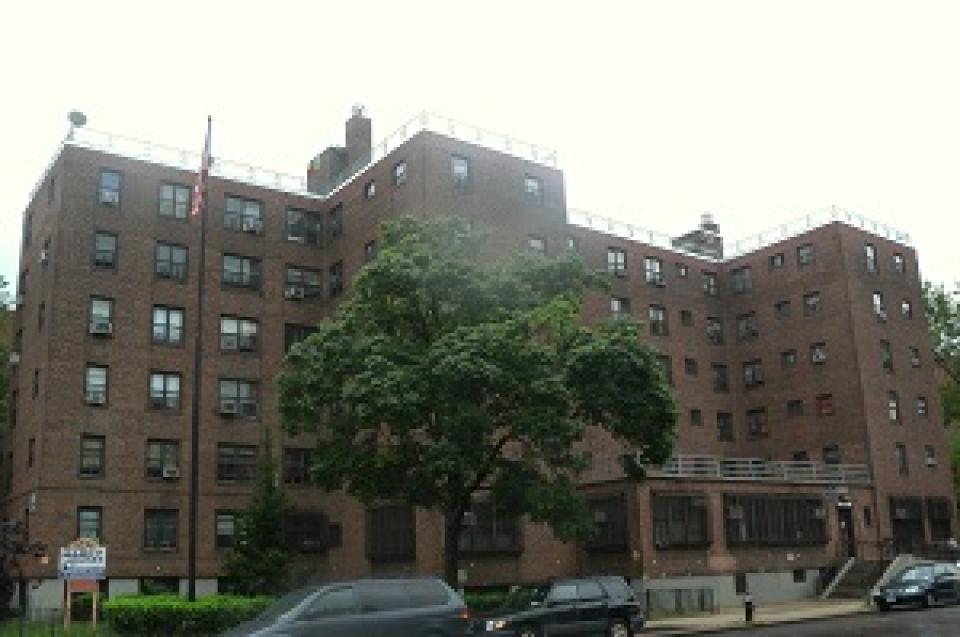
Fast, affordable Internet access for all.

Join us on Thursday, June 3rd at 5pm ET/4pm CT for a new episode of the Connect This! show, with co-hosts Christopher and Travis Carter (USI Fiber) joined by two representatives from the Internet Service Provider Cruzio: James Hackett (Director of Business Operations & Development) and Chris Frost (Director of Technology and Infrastructure).
The topic of the day is Equal Access Santa Cruz, and how a small ISP is expanding its network with philanthropy to serve low-income households. They'll talk about the organizing and technical efforts that got it started, challenges along the way, and the success they've seen as a result of their collective hard work.
The show will begin on Thursday, June 3 at 5pm ET/4pm CT.
Subscribe to the show using this feed, or visit ConnectThisShow.com
Email us broadband@muninetworks.org with feedback and ideas for the show.
Watch here, or below.
Less than six months after its creation and a year after the city of Waukegan, Illinois (pop. 89,000) began exploring options to improve connectivity in response to the Covid-19 pandemic, a Request for Proposals (RFP) has been issued by the Waukegan Broadband Task Force in search of qualified applicants to assist in the creation of a broadband master plan. Applications are due June 30th, 2021.
Waukegan is situated about halfway between Chicago and Milwaukee, along the west coast of Lake Michigan. A 2020 initial broadband assessment showed challenges related to price, devices, digital skills for remote learning, and a lack of coordination to get income-qualified residents onto incumbent ISP's low-income plans. The city is served by a patchwork of ISPs, including cable from Comcast, DSL from AT&T and TDS, and fixed wireless from Rise Broadband with starting prices on plans ranging from $30/month to $60/month.
The Task Force website outlines the group's goals and stakes for the community:
There are few cities with the opportunities that exist within Waukegan. However, to truly become a ‘City of Progress’ , Waukegan must take the critical steps necessary to achieve its great potential. While 2020 brought challenges to communities around the globe, it also presented opportunities for innovation, collaboration, change and growth. The Waukegan Community Broadband Taskforce is an open, collective impact inititative of committed community stakeholders for all residents, businesses, institutions interested in working together to create a path to the future.
The RFP calls for solutions addressing access, adoption and utilization, sustainable funding, and communication and community engagement with a particular focus on remote learning, telehealth, and economic development.
The steering committee for the task force is made up of a collection of local nonprofits, the public library, the community center, city officials, and the school district. Funding for the master plan will come from private contributions.
Applicants can direct questions to wbctaskforce@gmail.com by 5pm on June 6th, with full RFPs due by June 30th.
Last week we wrote about the partnership between Long Prairie, Minnesota and the forward-thinking and locally minded local telephone cooperative CTC to build a citywide fiber network and bring affordable, high-speed Internet to everyone in town.
Long Prairie isn’t alone, however, among north-central Minnesota communities needing better options, and for at least two others CTC has become a natural partner. This is both because of its location - offering service across the region in Sullivan Lake, Randall, Pillager, Outing, Nokay Lake, Nisswa, Motley, Mission, Lincoln, Leader, Freedhem, Ely, Brainerd, Baxter, and Crosby - and because it has become one of the most aggressive fiber builders in the state.
Two other cities, specifically, Ely and Little Falls, have also partnered with CTC to bring fiber loops to their business districts. Both communities have faced challenges when it came to building and connecting their residents and businesses to a fiber network.
Dealt a Poor Hand, Ely Forged Ahead
The City of Ely sits on the Southern side of Shagawa Lake with a population of 3,500. While iron used to be what drove the economy, today Ely is a tourist destination and is known as the entry point for the Boundary Waters.

Tired of waiting for connectivity solutions to come to town, one Minnesota community has instead partnered with a local telephone cooperative to build a fiber network reaching every home and business in the city.
In embarking on its journey to improve local Internet access six years ago, Long Prairie (pop. 3,300) ended up partnering with one of the most aggressive fiber network builders in the state - Consolidated Telephone Company (CTC) - on a solution that meets local needs. The two finished a ubiquitous Fiber-to-the-Home build in 2018, with CTC now owning and operating the network.
Looking for Solutions
The City of Long Prairie (pop. 3,300), the county seat in Todd County, Minnesota, has long struggled with connectivity. It has manifested in issues with connecting students from their homes, with losing parts of the local workforce, and in a lack of access to support larger healthcare institutions for their aging population.
In 2014, the city met with state officials as well as broadband providers to discuss the results of a feasibility study that was done back in 2011. Todd County stressed that this was a pressing issue that couldn’t wait anymore - they needed state support with funding and potentially help setting up a partnership with a local co-op. But this kind of partnership couldn’t just be with any co-op, it had to be a mutually beneficial partnership that could connect all of Long Prairie’s businesses and residents. It would take 2 more years before the community entered into an agreement with the right one.
CTC started in the 1950s as a telephone cooperative, and began offering Internet access via DSL service in the late 1990s and early 2000s. Around 2008, CTC’s Board of Directors decided that the best long-term strategy for providing strong, reliable connectivity would be to build out Fiber-to-the-Premise (FTTP) for all of its members.
Building on that initial network, the main vision and mission driving the co-op over the last 10 years has been getting as many people in the area fast and reliable connectivity as possible. But because CTC is just one firm, that has meant developing relationships with other towns, cities, and counties that bloom into successful partnerships.
As the oldest son of the legendary folk singer Woody Guthrie, Arlo Guthrie — the Town of Washington, Massachusetts’ most famous resident — built a name for himself as a singer-songwriter by letting folks know, “You can get anything you want at Alice's Restaurant.”
But if you ask the town’s Broadband Manager Kent Lew, there was one thing that was not on the menu in Washington before last year: high-speed Internet connectivity.
That’s no longer the case as the small town of Washington (pop. 549) has been on the vanguard of rural communities in the hill towns of the Berkshires that have built out (or are in the process of building out) Fiber-to-the-Home (FTTH) networks to bring gigabit speeds and affordable connectivity for residents for decades into the future.
The Pandemic: Curse & Blessing

“On the eve the Governor announced the (pandemic) shut down in March of 2020, our first Fiber Service Area was ready,” Lew recalled in a recent interview with us. “It was tremendous that we were able to do this just as people really needed it.”
As one of dozens of Western Massachusetts towns working in partnership with municipal utility provider Westfield Gas + Electric (which operates Whip City Fiber) to build broadband infrastructure, it was in 2015 that Town Meeting voters authorized a $770,000 bond issuance to finance half the construction costs of the $1.47 million network. The other half came from state grant funding.
Schools offer not only education, but nourishment, a place to form friendships and bonds, and a way to make sure youth are safe. When the pandemic hit, schools had to transition to distance learning and, as a result, many students disappeared because their family didn’t have access to or couldn’t afford a home Internet connection. It became immediately clear, all over the country, that a lack of broadband access and broadband affordability were no longer issues that could be ignored.
Many cities throughout the U.S. have been working over the last year to address this issue, but one city in particular - Columbus, Ohio - has been taking a holistic approach to broadband access.
The Franklin County Digital Equity Coalition was borne out of the emergency needs presented by the pandemic, but has shaped up to be a good model for how to address the broadband issues facing urban communities across the country.
After 11 months of meeting and planning, the coalition released a framework in March outlining its five pillars of focus: broadband affordability, device access, digital life skills and technical support, community response and collaboration, and advocacy for broadband funding and policy.
The coalition also developed two pilot programs to increase broadband access.
The first, which was a quickly deployed and desperately needed response to the lack of broadband access, was the Central Ohio Broadband Access Pilot Program. Launched in September 2020 in anticipation of the upcoming school year, it offered hotspot devices with unlimited data plans to central Ohio households with k-12 students. The program, while still growing, has been deployed with about 2,300 hotspots distributed so far with the help of PCs for People.
The second (the City of Columbus and Smart Columbus Pilot Projects) uses the city’s existing fiber backbone to bring affordable Internet service to the Near East and South Side neighborhoods in Columbus.
Both pilot programs are the result of nearly 30 organizations coming together to get affordable access to some of the city and county’s most vulnerable populations.
There’s Power in Numbers
The pandemic exacerbated extreme economic, racial, and social disparities that have long characterized New York City neighborhoods. When the pandemic hit, the "City That Never Sleeps" experienced the worst single-year job decline since the 1930s, with communities of color bearing the brunt of the disease itself in addition to the rising levels of unemployment, lack of affordable housing, and food insecurity it brought on.
Aiming to alleviate these deeply-entrenched challenges, New York City Mayor Bill de Blasio formed the Taskforce on Racial Inclusion and Equity last April to survey community organizations in NYC districts most severely impacted by COVID-19. As that work got underway, taskforce co-chair Deputy Mayor Phil Thompson kept hearing a resounding call for access to the Internet. Three months into the pandemic, de Blasio reported that 18 percent of all New Yorkers, more than 1.5 million city residents, had neither a home or a mobile connection, mainly due to issues of affordability.
In response to the public outcry, Mayor de Blasio set to work enacting New York City’s Internet Master Plan, starting with a $157 million initiative which will direct public and private investment to fund broadband infrastructure and expand low-cost or no-cost Internet access to 600,00 New Yorkers, including 200,000 city residents living in public housing, within 18 months.


This week on the podcast, we're joined by two representatives from Minnesota based CTC, a firm that started as a telephone cooperative and has become one of the most aggressive fiber network builders in greater Minnesota. CTC partners with electric cooperatives and communities to undertake internet infrastructure projects around the state. CEO and General Manager, Kristi Westbrock, and Director of Business Development, Joe Buttweiler, talk with Chris about the history of the cooperative's decision to embark on a network upgrade bringing fiber to its 15,000 members almost 20 years ago.
We learn about the towns of Long Prairie and Little Falls, which struggled for better connectivity solutions before CTC became a partner. The two joined forces to bring fiber service to residents and businesses there today.
This show is 29 minutes long and can be played on this page or via Apple Podcasts or the tool of your choice using this feed.
Transcript below.
We want your feedback and suggestions for the show-please e-mail us or leave a comment below.
Listen to other episodes here or view all episodes in our index. See other podcasts from the Institute for Local Self-Reliance here.
Thanks to Arne Huseby for the music. The song is Warm Duck Shuffle and is licensed under a Creative Commons Attribution (3.0) license.
In Ohio’s Miami Valley, the final phase of construction for one of the country’s first multi-jurisdictional networks, the GATEWay Public Fiber Network, is underway.
The final network will connect the cities of Centerville, Kettering, Miamisburg, Moraine, Oakwood, Springboro and West Carrollton with more than 40 miles of fiber, with the resulting infrastructure bringing increased bandwidth, speed, and capacity at an affordable price to the local governments, schools, nonprofits and public safety facilities of seven communities under the Miami Valley Communications Council (MVCC).
Funding the Final Strands
Independents Fiber Network (IFN) has agreed to fund Phase II of the project with $1.8 million, bringing the total cost to just over $3 million. IFN currently owns some of the fiber connecting Springboro and Miamisburg, operating as a middle-mile provider over its 2,000 route-mile network throughout 31 Ohio counties.
“The unique public-private partnership with IFN made it possible for member communities to complete this project without any additional investment of taxpayer dollars,” Leanne Nash, MVCC Board Chair and West Carrollton City Council member told the Dayton Daily News. " At the end of the project, MVCC and IFN will equally split the available fiber and conduit assets which can then be sold or leased to interested technology providers.”
In the American Rescue Plan Act, Congress and the Biden Administration included a multi-billion dollar appropriation to help expand high-speed Internet access. This guide offers an overview of the different funding opportunities for communities interested in expanding broadband services. As application deadlines vary in some cases and other money must be spent within certain time frames, it is critical for states, municipalities, community organizations, and Tribal governments to start planning initiatives now.
It’s also worth emphasizing that 18 states still put localities at a disadvantage when it comes to spending anticipated funding effectively by preserving laws that interfere with community investment in broadband infrastructure. Much of this money could also be funneled for other purposes due to a lack of good plans and community engagement.
The amount of funding flowing into communities is unprecedented. Localities should prepare to spend funds on needed, futureproof infrastructure. This is an historic, once-in-a-lifetime investment in Internet infrastructure and communities who develop a clear, actionable plan and are as ready as possible once the money starts flowing will prosper.
Directory
If you’re a homeowner looking for assistance paying your Internet bill…look to the Emergency Broadband Benefit Program or Homeowner’s Assistance Fund.
If you’re an HBCU or Minority-serving institution looking to expand Internet access to your students, or if you’re a minority business enterprise or nonprofit organization in the surrounding community...look to the Connecting Minority Communities Pilot Program.
if you’re a Tribal government, Tribal organization, or Tribal college or university, including native Hawaiian organizations, education programs and native corporations…look to the Tribal Broadband Connectivity Program.
If you’re a city interested in partaking in a public-private partnership…look to the Promote Broadband Expansion Grant Program.
If you’re a school or library whose main concern is obtaining remote Internet access devices...look to the Emergency Connectivity Fund.
Federal Aid Directly To States, Counties, Localities and Territories